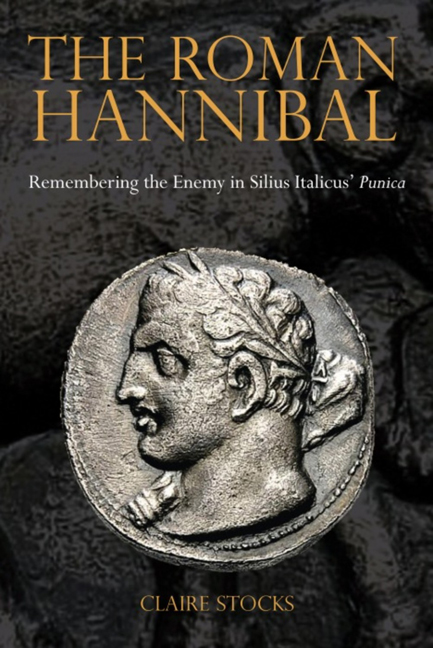Book contents
- Frontmatter
- Contents
- Acknowledgements
- Texts and Translations Used
- Introduction: Silius Italicus and the Roman Hannibal
- Chapter One The Roman Hannibal Defined
- Chapter Two Before Silius: The Creation of the Roman Hannibal
- Chapter Three Silius' Influences
- Chapter Four Epic Models
- Chapter Five Silius' Roman Hannibal
- Chapter Six Out of the Darkness and into the Light
- Chapter Seven Hannibal's Decline after Cannae: Separating Man from Myth
- Chapter Eight Imitators and Innovators
- Chapter Nine Band of Brothers
- Chapter Ten The ‘Lightning Bolts’ (Fulmina) of War
- Chapter Eleven The Man and his Myth: The Self-Defined Roman Hannibal
- Conclusion: The Crossing of the Worlds: The Move from Internal to External Narrative
- Bibliography
- General Index
- Index locorum
Introduction: Silius Italicus and the Roman Hannibal
- Frontmatter
- Contents
- Acknowledgements
- Texts and Translations Used
- Introduction: Silius Italicus and the Roman Hannibal
- Chapter One The Roman Hannibal Defined
- Chapter Two Before Silius: The Creation of the Roman Hannibal
- Chapter Three Silius' Influences
- Chapter Four Epic Models
- Chapter Five Silius' Roman Hannibal
- Chapter Six Out of the Darkness and into the Light
- Chapter Seven Hannibal's Decline after Cannae: Separating Man from Myth
- Chapter Eight Imitators and Innovators
- Chapter Nine Band of Brothers
- Chapter Ten The ‘Lightning Bolts’ (Fulmina) of War
- Chapter Eleven The Man and his Myth: The Self-Defined Roman Hannibal
- Conclusion: The Crossing of the Worlds: The Move from Internal to External Narrative
- Bibliography
- General Index
- Index locorum
Summary
Hannibal!
The name has impact. Instantly recognisable today, ‘Hannibal’ is blazoned across tourist guidebooks for Tunisia, is the titular hero of documentaries and films, and is one of the few classical words that causes no difficulties for modern spell-checkers. From the first moment that Rome fought Hannibal on the battlefield, his name became a by-word for perfidy, cruelty, and fear. Known as dirus Hannibal (‘dread Hannibal’), perfidus Hannibal (‘treacherous Hannibal’), and Hannibal ad portas (‘Hannibal at the gates’), the man and his epithets became something of an obsession for Rome's authors as they conjured up a figure of monstrous proportions whose quasi-mythical status turned him into an enduring bogeyman of popular culture.
Whilst Hannibal has become a figure that crosses cultural boundaries, something of a poster boy for the Tunisian tourist industry as well as for Hollywood,
his story originates in Rome. For though we know that he had his own, Greek, historians, save for a few scraps of papyri his life-story survives via Roman texts. Even Polybius' Histories, which provide one of our earliest accounts of the man and his legacy, though written in Greek and in part aimed at a Greek audience, must be considered Roman in its focus since it aims to show how Rome acquired its supremacy in the
Mediterranean, and was no doubt heavily influenced by Polybius' close association with the Scipios.
Hannibal, then, is a Carthaginian with a Roman legacy. In this he is not alone, for Rome's authors had a plethora of home-grown and foreign exempla upon which they liked to draw, including Alexander the Great, Julius Caesar, Pompeius Magnus, and Scipio Africanus. And yet Hannibal is ascribed a somewhat unique status, cast in the role of Rome's ultimate enemy. Whereas Alexander the Great could only ever be debated about in hypothetical terms, the man whom Rome could have, should have, and would have beaten had it ever had the chance to fight him (Livy 9.17.1–19.17), Hannibal was the man who showed Rome what an enemy was supposed to look like.
Hannibal, then, captured Rome's imagination, and his enduring popularity as the subject matter for books is evident in the many modern works which continue the Roman love for exploring and re-evaluating Hannibal through historical studies of his wars, life, and legacy.
- Type
- Chapter
- Information
- The Roman HannibalRemembering the Enemy in Silius Italicus’ Punica, pp. 1 - 5Publisher: Liverpool University PressPrint publication year: 2014

